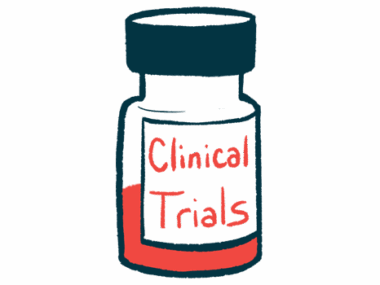Not just a seat at the table: Patient advocacy needed in CF research
Participation on committees is essential for driving progress for the community
Written by |

Cystic fibrosis (CF) has a way of stripping one’s agency and limiting control over circumstances and the future. It is difficult, isolating, and can lead to dark places.
For me, advocacy has been a balm that tempers feelings of anxiety, hopelessness, and isolation. Over the years, I’ve served on several committees, including the Cystic Fibrosis Foundation’s Adult Advisory Council and Clinical Research Executive Committee. This has provided meaning to my life and made me feel part of something bigger than myself. I also believe the presence of people with CF on these committees is essential for driving progress for the CF community.
‘Nothing about us without us’
Disability rights groups emphasize that true progress can’t be made without the participation of those who are supposed to be the beneficiaries of the work. In other words, people with CF should be included in decision-making and strategic capacities in the scientific, medical, and policy-related arenas.
On a practical level, it makes sense to include people with CF, along with caregivers and parents of children with CF, in clinical trial protocol reviews. The Clinical Research Executive Committee reviews and sanctions studies for clinical trial sites across the country. It’s our responsibility to consider the studies’ feasibility and whether people with CF are protected and given the autonomy to choose to enroll. It’s a delicate balancing act and requires active discussion about what must be considered for a study to be sanctioned.
There will always be rooms where people are talking about cystic fibrosis without the presence of somebody with CF. I often emphasize that one of my goals as a committee member is to impress upon other members — doctors, clinical research coordinators, those designing clinical trials — to think like a patient and try to imagine how they might think about risk if they were living with this terrible disease. This doesn’t negate including patients; it underscores the rationale. To truly bring forth a patient-centric world, patients should be in these conversations, and people involved in research should continue to improve at designing patient-centric studies.
How to be an effective patient advocate
Committee representation doesn’t mean patients should only leverage their background as somebody with lived experience. It’s not possible for us to compartmentalize our knowledge, and scientists and clinicians aren’t asked to opine just on their range of expertise. People with lived experience have all kinds of expertise and should be invited to bring those perspectives. Successful collaboration relies on it.
Effective patient advocacy and representation also doesn’t mean being an expert. It’s instead about having something to offer that can connect the thread to the broader patient community.
For what it’s worth, patient representatives have a bigger remit than a lot of their peers. They are often asked to provide their perspective on how others in the community might feel as well. This is difficult and requires those who want to be effective to be plugged into their communities, to understand the nuances of different sub-communities, and to be willing to amplify different perspectives.
Effective patient representatives should also be clear and lucid communicators. Instead of providing binary criticisms (“This study is not feasible”), patient representatives must communicate about the minutiae. Are the inclusion criteria too strict and narrow, effectively eliminating a large percentage of patients and reducing the study’s generalizability? Or is the design too crammed, making it difficult for many people to participate without taking a significant financial hit?
Patient representatives should have two objectives: to provide feedback on the immediate example and constructive, qualitative feedback that inspires these factors to be considered for similar, subsequent examples. Patient representatives wield a lot of influence in these roles and can inspire a lot of change.
While everybody deserves to be a patient advocate/representative if they desire to be, not everybody should have to be for their perspective to be accounted for. That’s where effective patient advocates come in — by ensuring that different perspectives are included in the decision-making process and through qualitative, direct, and constructive feedback.
Note: Cystic Fibrosis News Today is strictly a news and information website about the disease. It does not provide medical advice, diagnosis, or treatment. This content is not intended to be a substitute for professional medical advice, diagnosis, or treatment. Always seek the advice of your physician or other qualified health provider with any questions you may have regarding a medical condition. Never disregard professional medical advice or delay in seeking it because of something you have read on this website. The opinions expressed in this column are not those of Cystic Fibrosis News Today or its parent company, Bionews, and are intended to spark discussion about issues pertaining to cystic fibrosis.








Jen Cogliano
Great column Tre! What an important topic! Well done and thanks for all you’re doing!